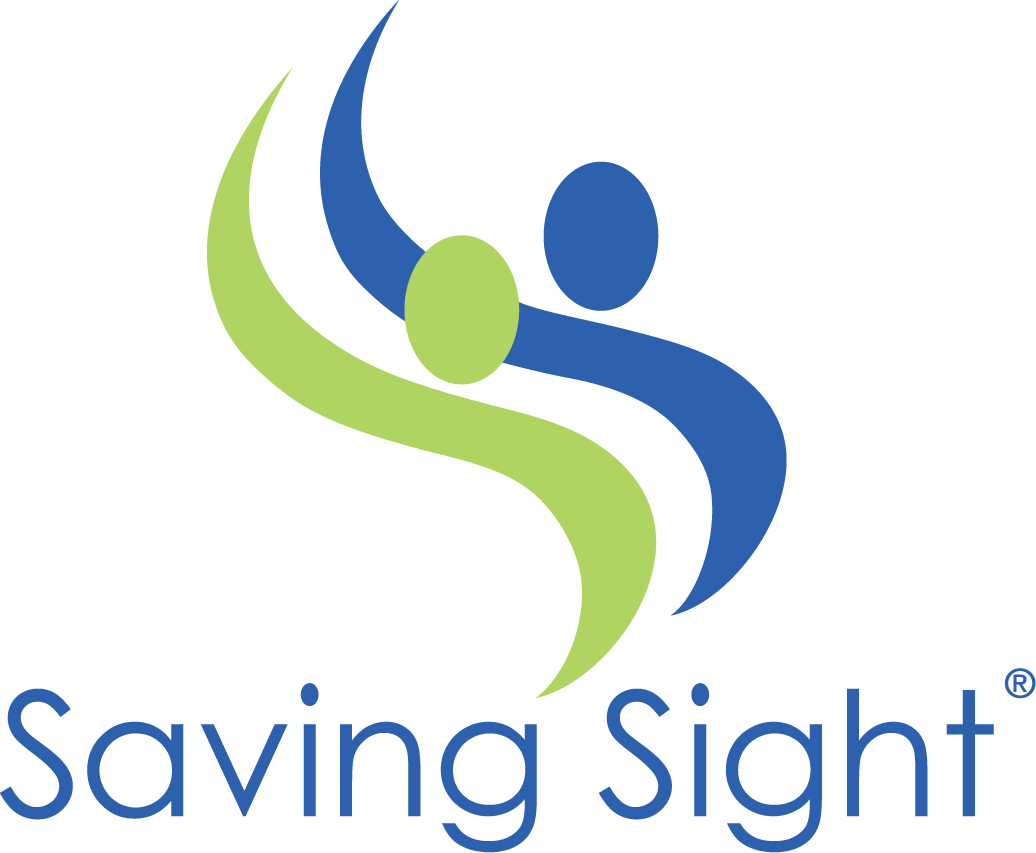Industry News
Honoring the Legacy of Wichita Eye Donors
In June 2021, Saving Sight and the Kansas Eye Bank joined together in a partnership to serve the entire state of Kansas. Our new Wichita facility has rich history of serving its community by facilitating the gift of sight. We’re happy to share the following images from the donor quilts that were made over the years, celebrating the legacy that Wichita-area eye donors left in their selfless gifts.









Facilitating the Gift of Sight | Donor Services Center Spotlight
Saving Sight’s Donor Services Center (DSC) plays a vital role in facilitating the gift of eye donation for thousands of individuals each year. Our DSC serves as the communications hub of Saving Sight’s eye banking operations. The department, staffed 24 hours a day, seven days a week, keeps the donation process moving forward and helps fulfill the wishes of potential eye donors.
A DSC coordinator’s work begins when they receive a referral for a potential
Once the DSC has determined that Saving Sight can move forward with recovering the donor’s gift of eye donation, they dispatch a recovery technician on site. They will also make courtesy calls back to the donor hospital and the funeral home to keep them up-to-date on the recovery technician’s arrival and departure.
At the same time, the DSC team will work to gain access to the patient’s medical chart. They will review records for any potential rule-outs for donation to ensure safety for the transplant recipient. Finally, specially trained DSC team members will conduct a final review of medical records, serology results, and any other important information to the case to determine final eligibility and release for transplant.
The DSC’s work happens quickly, and eye donation recovery must happen within 24 hours from the time of death. Therefore, the DSC team members must exhibit excellent multi-tasking skills while also compassionately communicating with various stakeholders, including grieving families. We’re proud to have a group of caring and highly skilled individuals who work in our Donor Services Center!
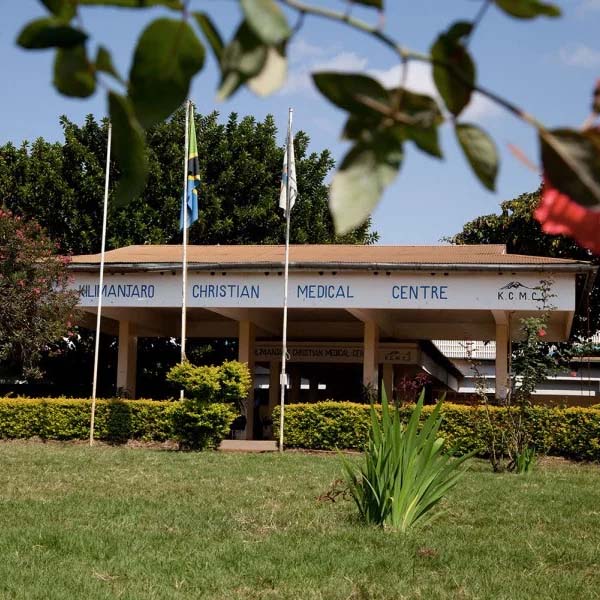
Changing Lives Through Sight Restoration in Tanzania
On July 2, 2021, Saving Sight distributed 6 corneal tissues to the Donor Network of Arizona to be used by one of their surgeons in Tanzania for a mission trip.
Dr. LeeSa Jackson joined Dr. Elisante Jackson Muna at the Kilimanjaro Christian Medical Center to perform a total of 17 gratis surgeries between the dates of July 5th-16th, to those in need.
This trip was not Dr. Jackson’s first to Tanzania. In 2018, Dr. Jackson traveled to Tanzania to perform 18 corneal transplants.
The medical team gathered stories from each recipient. Read the impact these sight-saving corneal transplants had for the corneal recipients below.

[Saving Sight recipients, Top L-R: Edson Mika, Bright Shipella, Meshack Nzowa; Bottom
L-R: Joshua Martin, Omary Hindu, Neema Mkwizu]
Edson Mika
Edson Mika is a 31-year-old medical doctor who works as a general practitioner in the Dodoma region. The most challenging problem for Edson is his poor vision from keratoconus. Overtime, his keratoconus became worse and worse, and his poor vision became a major problem in his career. He could not see to take care of his patients or write in his patients’ charts. Edson tried a variety of medicines to aid his vision, but there was little benefit. Edson greatly appreciates the cornea donation because, as he notes, “we all have things to do in our lives, so it is important to have the donation.” More simply, Edson “thanks the donor very much.” As a general doctor who has experienced a cornea transplant, Edson believes organ transplantation is good because it allows people to continue on with their lives in the best way. He says that we should ask the question, “Does it help me now?” The advice Edson would give someone in his position is to take full advantage of the ability to see well again. He indicates that his poor vision before the cornea transplant was the only thing holding him back and now he hopes to “progress well” in his career as a doctor.
Bright Shipella
Bright Shipella is a 12-year-old boy from Dodoma, the capital of Tanzania. Bright lives with his two siblings and loves to play soccer. However, due to his poor vision from keratoconus, Bright couldn’t see the ball to play soccer anymore. Bright says he has fought through the inflammation of his eyes and poor vision. He wishes to improve his soccer skills, but only wants to compete recreationally or on the local level. As a prime career goal, Bright plans on becoming a doctor. Bright sends the following message to others who may be considering a cornea transplant. “I feel good. My eye vision is performing well. I can now see the blackboard.” (likely referencing the blackboard near the hospital bed.)
Meshak Nzowa
Meshak Nzowa is a 20-year-old young man from Tanzania who lives with his parents and younger brother. He previously tried traditional medicine, contact lenses, and glasses, which helped his cornea deformity, keratoconus, only temporarily or not at all. As a student, Meshak finds it extremely difficult to read a book. When he attends local basketball game, Meshak is unable to see the score. At night, he finds it challenging to walk because he cannot see his way. Because of these difficulties, Meshak would tell the donor that is truly made a difference and that it is without a doubt helpful. His advice to people in his position it to recognize the importance of the problem earlier on so they can make the most of their remaining life. Now that he has had his cornea transplant surgery, Meshak hopes to become ore involved in the local basketball leagues as a player, not just a fan. His short-term goals are to continue his education to be accepted into high school and then into a university. Meshak’s prime long-term goals is to become a doctor, specifically an ophthalmologist, in order to help patients, like himself who have keratoconus. Meshak is confident that he will be able to study much better now with his improved vision, so he sees these goals within his grasp.
Joshua Martin
Joshua Martin is a 19-year-old student who attends Karagwe University. He lives at the university in the Karagwe District of the Kagera Region. Joshua has many brothers and a younger sister who live with his parents at his family home. In Joshua’s free time, he loves to draw letters, various types of calligraphy, and portraits of people. Due to Joshua’s poor vision in his left eye from keratoconus, he had difficulty at school taking down information from the blackboard and reading books, even with the help of friends. The keratoconus eventually affected Joshua’s vision so severely in his left eye that he only used one eye, his right eye, to do school related tasks. At this point, he considered dropping out of the university because of his poor vision and “doing anything that would possibly fit my society.” To the person who donated the cornea, Joshua says, “I just give a good thanks to him or her whomever he or she is because they just changed my whole life.” Now that Joshua’s vision has improved after the cornea transplant in his left eye, he plans to continue his education at Karagwe University.
Omary Idd Hindu
Omary Idd Hindu is a 25-year-old ticket salesman from Babati Mjini District in the Manyara Region. In his daily life, Omary reads over, cuts, and sells many train tickets with very small text. His poor vision has made his work as a train ticket salesman significantly more difficult, almost nearly impossible. Omary has corneal scarring due to hydrops associated with keratoconus. His poor vision began after he began scratching his eyes as a result of exposure to a strong perfume which irritated his eyes. In an effort to improve his vision, Omary tried multiple mediciations that, in the end, did not help. Omary has had to wait years for his cornea transplant surgery. To the person who donated the cornea, Omary says, “God bless them, and I am so thankful for that…And by the help of God and the doctors, I can be better now.”
Neema Omary Mkwizu
Neema Omary Mkwizu is a 12-year-old girl from the Wilaya ya Arusha Mjini District in the Arusha Region. Neema is an only-child, which is rare in the Tanzanian culture. When Neema is not attending school, she loves to read and write about historical information. Neema’s case of keratoconus occurred idiopathically. She has no associated risk factors, or systemic or ocular conditions associated with her keratoconus. Her vision was not helped by other treatments, including spectacles. To the person who donated the cornea, Neema simply states, “thank you.” To others who may be in her position, she advises them to read books and, as a result, gain knowledge. Neema’s favorite historical location is the Amazon Rainforest, which she hopes to travel to and learn more about in her future. Neema plans to become a history teacher or an eye doctor, specifically a cornea specialist, so that she can treat others with her same problem.
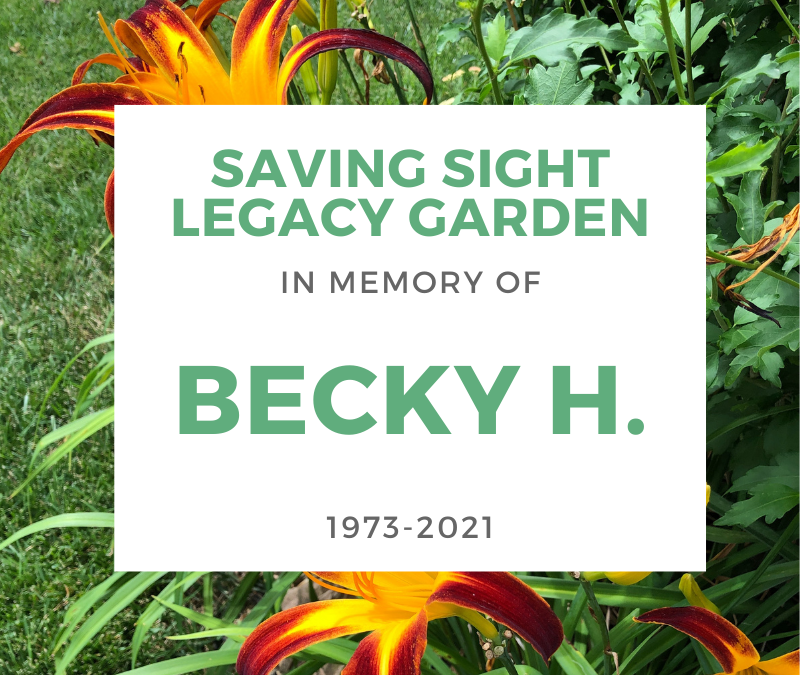
Becky’s Legacy

In Memory of Becky H., 1973-2021
“Becky was a strong advocate for those in need, especially children. She loved genealogy, German food, and her family and friends,” says Eric.
#LegacyGarden #DonorHero
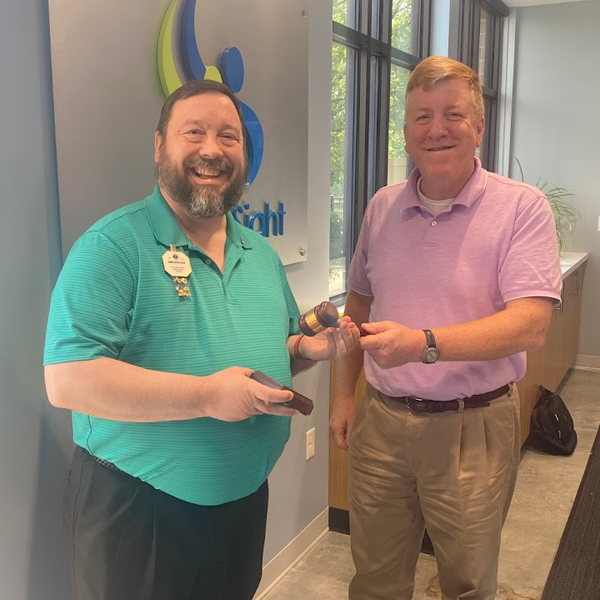
Saving Sight Introduces the 2021-2022 Board of Directors

[pictured L-R: Pat Martchink passing the gavel to Larry Boettcher; Cassidy Obermark being honored for her board service; the board meeting at the Kansas City C office at the June meeting.]
Kansas City, Mo. (July 1, 2021) – Saving Sight is pleased to welcome four new people to its Board of Directors for the 2021-2022 fiscal year (July 1 – June 30). Welcome Council Chair Lion Bob Noellsch, Vice-Council Chair Lion Devin Struttmann, Lion Mike Sliger, and Wichita community board member Marc Vincent. PDG Lion Scott Sattler remains on the board and switched seats to represent Lions District M-1, Lion Larry Boettcher was re-elected to a second term, as well as community members Jeff Schaeperkoetter and Amy Leslie.
Board members are key to the organization’s success. They actively participate in long-range planning and monitor the organization’s financial health and overall performance. As highly visible members of their communities, the board members also enhance Saving Sight’s public standing by sharing the mission, accomplishments, and goals with Lions clubs, the general public, and other partner organizations. As Lion board members, these individuals also keep their districts informed about Saving Sight.
“We are able to change more lives by saving sight due to our board members engagement, leadership, support and oversight,” said Tony Bavuso, chief executive officer.
In addition to welcoming new members to the board, Saving Sight also expressed gratitude to three individuals who retired from the board of directors on June 1, 2021. We were honored to have PCC George Winkeler, Jr., PDG Roger Tiemann, and Lion Dr. Cassidy Obermark serve on our board and thank them for their valuable service.
At the June Board of Directors meeting, the board elected its 2021-2022 leadership team.
These board members were elected to leadership roles for the new fiscal year:
President: PCC Larry Boettcher, MD-26 M4
Vice President: Lion Pat Martchink, MD-26 M2
Treasurer: Lion Mike Oldelehr, MD-26 M7
Secretary: PDG Scott Sattler, MD-26 M1
At the June board meeting, past president Lion Pat Martchink ceremoniously passed the gavel to newly elected president PCC Larry Boettcher. Pat will serve as vice president for the 2021-2022 fiscal year to ensure a smooth leadership transition.

Practice Eye Safety This Independence Day

The U.S. Consumer Product Safety Commission reports that there are 9,000 fireworks-related injuries each year in the U.S. Thirty percent of those are eye injuries, and one-fourth of those eye injuries result in blindness. What’s more, children account for the majority of fireworks-injury victims, and for children under 5, sparklers — which burn at 2,000 degrees Fahrenheit and can cause third-degree burns — account for one-third of fireworks-related injuries.
For these reasons, the American Academy of Ophthalmology encourages you to follow these recommendations:
- Never let children play with fireworks of any type.
- View fireworks from a safe distance: at least 500 feet away, or up to a quarter of a mile for best viewing.
- Leave the lighting of fireworks to trained professionals.
- Follow directives given by event ushers and public safety personnel.
- Respect safety barriers set up to allow pyrotechnicians to do their jobs safely.
- If you find unexploded fireworks remains, do not touch them. Immediately contact your local fire or police department.
- If you get an eye injury from fireworks, seek medical help immediately.
If you do decide to shoot off fireworks yourself, be sure to follow all safety precautions, protect your eyes, and keep children a safe distance away. The staff at Saving Sight wishes you a safe and fun-filled Independence Day weekend

New OCT Machine Continues to Bring Innovation to Saving Sight

“The OCT is a big microscope that measures the thickness of the cornea, and we use it to measure our corneas before we start processing for our DSAEK or ALK processing. We also take images after processing so the surgeon can see what the processed tissue actually looks like. It gives us more insight on the quality of the tissue and if it will be suitable for the surgery type we are offering it for. We can be proactive in what we offer to the surgeons,” says Debora Van Klinken-Muntz, Lead Laboratory Technician.
“Using it as an eye bank saves us a lot of time. It also lets us be good stewards of the tissue we receive. I don’t know how we could do eye banking without an OCT machine.”

Saving Sight’s Support of KidSight Screenings
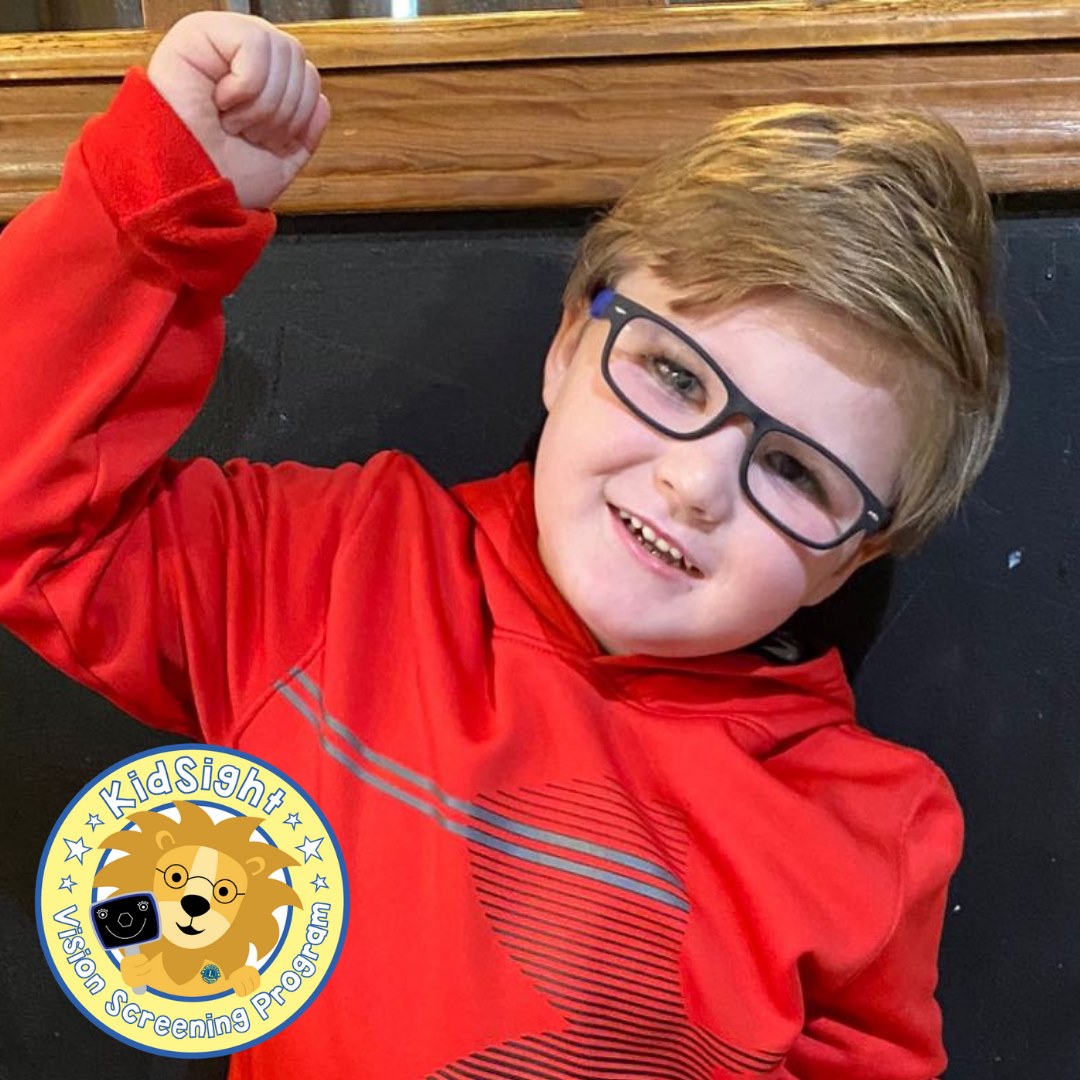 Saving Sight continues to partner with KidSight, a Missouri-based 501(c)(3) nonprofit organization that provides free vision screenings for children. At our June 2021 board meeting, the Saving Sight board voted to donate $35,000 to KidSight to support their work. This brings the total amount Saving Sight has donated to KidSight during the 2020-2021 fiscal year to $65,000.
Saving Sight continues to partner with KidSight, a Missouri-based 501(c)(3) nonprofit organization that provides free vision screenings for children. At our June 2021 board meeting, the Saving Sight board voted to donate $35,000 to KidSight to support their work. This brings the total amount Saving Sight has donated to KidSight during the 2020-2021 fiscal year to $65,000.
As an organization with a mission to change lives by saving sight, supporting organizations like KidSight with a similar mission is vital.
The KidSight program was founded in St. Louis, Missouri in 1995 as a part of Saving Sight with a handful of volunteers screening a few hundred children a year. Today, KidSight’s program has grown to screen the vision of more than 67,000 kids throughout Missouri each year with the help of trained staff and volunteers operating across the state. Using a photoscreening device, they quickly and noninvasively screen children ages 6 months to 6 years for common causes of childhood vision loss. KidSight then refers at-risk children to eye doctors for examination, necessary treatment and follow-up to ensure kids get the care they need. KidSight has held its own 501(c)(3) status since August 2016. You can learn more or make a donation to KidSight at www.kid-sight.org.
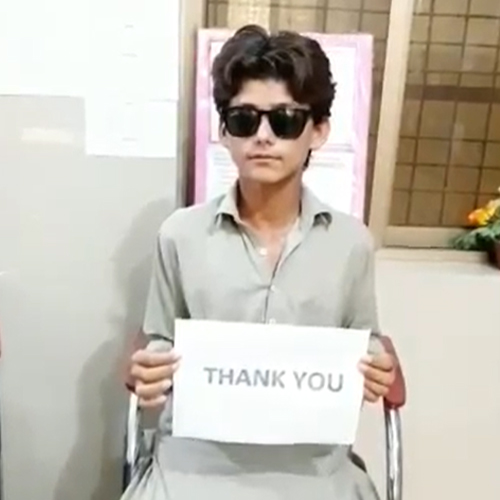
Changing Lives Through Sight Restoration in Pakistan
In 2018, Saving Sight began working with Dr. Fawad Zafar. Dr. Zafar is a urologist who lives in Iowa and also coordinates the acquisition of corneal tissue for transplant in Pakistan.
“In April 2017, one of my class fellows who was a doctor, but left medical profession and went into foreign service, was ambassador of Pakistan at Sri Lanka. He was telling me how corneas were being sent from Sri Lanka to Pakistan and other countries. I thought that was a great project and I contacted them,” says Dr. Zafar.
At the time Dr. Zafar didn’t know that U.S. eye banks sent tissue internationally. He did a Google search for ‘cornea tissue for overseas surgery from the U.S.’ and the first eye bank that popped up was the Lions Eye Bank in Tampa. He called their eye bank. “I explained to them how we were raising money, and we wanted to send corneas to our Mayo Hospital in Lahore, where I trained. My class fellow at the time was professor of ophthalmology over there and they had a waiting list of 500 patients.”
They received 10 tissues from the Lions Eye Bank in Tampa that month, and the project was underway. Saving Sight, the Lions Eye Bank of Indianapolis and others also began working with Dr. Zafar on this project.
“At first, we were only interested in the Mayo Hospital in Lahore but, when I started calling around, it turned out that there are no measures of cornea donations, and nobody is donating any corneas in Pakistan. The entire country is depending on Sri Lanka,” he says.
“I then went ahead and started calling hospital after hospital, and we now have 39 facilities that we support. There are 5 states in Pakistan, like we have 50 states in the U.S.” Dr. Zafar is now coordinating distributing corneas to hospitals in all 5 states throughout Pakistan.
“Saving Sight has been so supportive and so helpful that it is just unreal,” he says. “I wanted to share with you that to date we have sent 3,574 corneas to Pakistan.” Several of these tissues have been distributed by Saving Sight. So far in 2021, Saving Sight has sent 43 tissues to Pakistan.
“The project was started by my two sisters who are doctors, one is a cardiologist in Dallas, and one is a hospitalist in Indianapolis, and me,” shares Dr. Zafar. “I am also a lifetime member of the Association of Pakistani Physicians of North America (APPNA). APPNA has about 6,000-7,000 members and I decided once we spread out, that we might be able to have more support if we contacted APPNA and brought this project under their umbrella, so that is what’s happened.”
Dr. Zafar and his sisters coordinate this process on a 100% voluntary basis. They raise funds among their family, friends, and colleagues to coordinate costs and shipments of the tissues with U.S. eye banks. The surgeons in Pakistan then perform the surgeries and post-operative care for free. Each of the hospitals are also government hospitals, meaning they do not charge the patients for their care.
Dr. Zafar personally calls each patient to make sure they were well-taken care of and to make sure no costs were incurred as well. Nearly all patients are underserved and are unable to pay for their healthcare needs.
The work of Dr. Zafar, the teams in Pakistan, and the involvement of U.S eye banks like Saving Sight, literally saves sight and changes the lives of these recipients. Without this work, they would not have access to care and would lead a life of corneal blindness.
“It would not have happened without Saving Sight’s help and without the other eye banks. You have made a huge impact on people’s lives,” says Dr. Zafar.
Dr. Zafar provided two videos of grateful corneal recipients in Pakistan.
Vision Restored Thanks to Corneal Transplantation
This young man received a sight-restoring cornea transplant at the Quaid-E-Azam Medical College, Bahawalpur Pakistan thanks to the selfless gift of sight from a Saving Sight eye donor. Thank you to Dr. Fawad Zafar, surgeons in Pakistan, and the Association of Pakistani Physicians of North America for making this possible.
The Gift of Sight Changes Lives in Pakistan
This young woman received a sight-restoring cornea transplant at the Quaid-E-Azam Medical College, Bahawalpur Pakistan thanks to the selfless gift of sight from a Saving Sight eye donor. Thank you to Dr. Fawad Zafar, surgeons in Pakistan, and the Association of Pakistani Physicians of North America for making this possible.
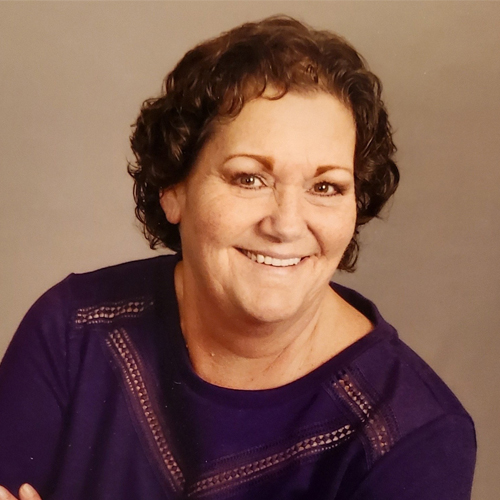
Melanie’s Legacy As An Eye Donor
“My mom was extremely devoted to her family, especially her mother, two kids and five grandchildren. She had just gotten her first granddaughter after four boys and was so proud. She was extremely giving, to the point she’d go without so others had. She was an AMAZING cook, no one could come close to her meals, and she took great pride in that.
She loved shopping, she spent each Saturday wandering the aisles of Walmart. She was also an avid church goer, she attended every Sunday with her family. She had liked gardening in earlier years, and recently was obsessed with watching Wheel of Fortune. She knew the answers even before the contestants did,” shares Hannah.
Hannah says she and her mother had never talked about donation prior to her mother’s passing. “I was very familiar because I work in healthcare, but other than knowing we were each listed on our respective drivers licenses, we had never had a discussion about it.”
A Legacy Lives On
“Her legacy lives on especially in her grandchildren, who are currently learning to do acts of kindness so that her huge heart may live on. Regarding donation, I know her legacy is living in the people she has given new life, vision, and mobility too. Also the people who will benefit from the research she contributed too,” says Hannah.
“I was inspired to share our story, because I want to help others who are in a similar pain, understand that good does come eventually. I would just like people to know how missed she is, but how grateful we are that she was able to give to others.”


Here are two photos Hannah provided of her mother, Melanie; the second is a picture of her with Hannah’s son, her second oldest grandchild. It just shows perfectly what a wonderful Mimi she was.
Get the Latest in Your Inbox
Sign up below to receive Saving Sight’s quarterly round-up of industry news straight to your inbox. We will never share your information with third parties and you may unsubscribe at any time.

